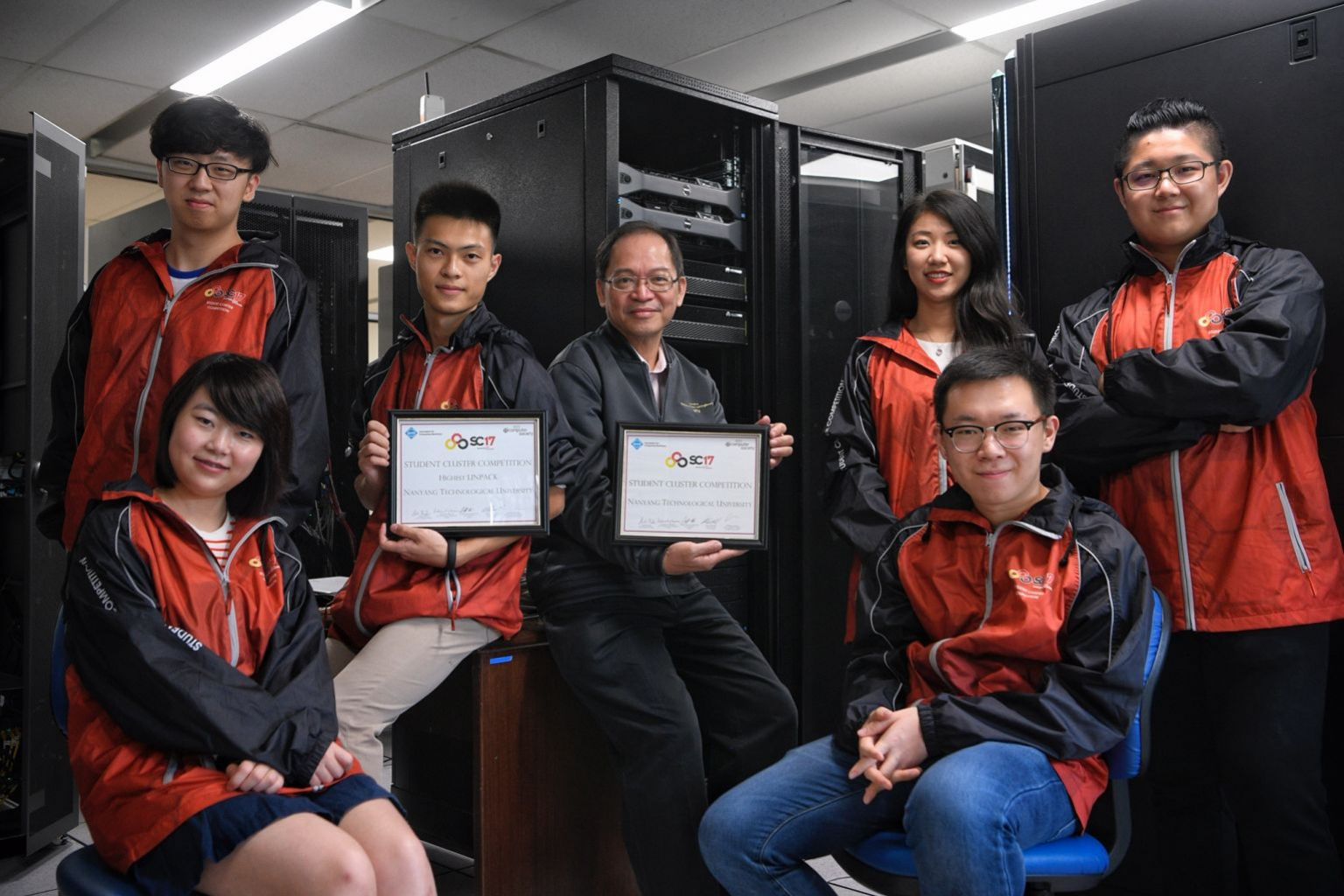NTU students take top spot in international supercomputing challenge

SINGAPORE – In the world of supercomputing, some consider taking part in the student cluster competition at the Supercomputing Conference (SCC) 2017 a major achievement.
But in only its second time participating in the competition held in the United States from Nov 13 to 15, Nanyang Technological University (NTU), represented by a team comprising six undergraduates, bagged the top prize.
It beat 15 others from around the world, including top universities like the Georgia Institute of Technology, Taiwan’s National Tsing Hua University and China’s Tsinghua University.
The team from NTU’s School of Computer Science and Engineering had to configure a high performance computing (HPC) system that can understand and process complex scientific applications that were issued to them in mid-August.
For instance, the system may need to run applications that can detect oil and gas in the sea, or analyse a given sequence of DNA, which can take between eight to more than 30 hours to process.
But the team only had 48 hours during the conference in Denver, Colorado to build their system and run the applications.
To challenge them further, all teams were also given a mystery application at the start of the conference that their system had to process as well. The NTU team had to configure a softwareto simulate the Earth’s atmosphere.
When the competition started on Nov 13, the teams worked feverishly around the clock to configure HPC systems that would allow four applications to run smoothly and efficiently.
While the HPC systems they built are not supercomputers, which refers to a system that performs at or near the currently highest operational rate for computers, they do draw on the same HPC technology.
The NTU team advisor Associate Professor Francis Lee said the students employed a maverick strategy by packing more computing power into fewer individual computers in the cluster, known as nodes in a HPC system.
While most teams used only eight graphic processing units, the NTU team used twice the number, but packed them densely into just two nodes. This was because the team was able to get access to more graphic processing units, sponsored by technology firm Nvidia Singapore.
“Previously, we didn’t have the computing power to match, but this year we packed (two nodes) with 16 of these units and made it really powerful,” said Prof Lee from NTU’s School of Computer Science and Engineering.
The students also consulted domain experts to better understand the science behind the applications, including the Earth Observatory of Singapore, which made it easier for them to optimise the applications for the HPC system they built.
Among other things, judges appraised them on their presentation skills, and how well they understood and executed the application software.
The National Tsing Hua University and Tsinghua University were placed second and third respectively.
NTU had also entered a team in 2016 for the SCC competition which has been running since 2007. The team was sponsored by the National Supercomputing Centre Singapore (NSCC).
Team captain Liu Siyuan, 21, a fourth-year computer science student, said that the SCC competition tested the the students’ skills in many aspects.
“First of all, we had to understand the applications and the maths behind them, and we also needed to have enough coding skills to change the codes of these applications (so that they can run fast on our computing system).”
While the team did not win any prize money, Prof Lee said that their victory has placed Singapore on the map in the growing field of supercomputing.
NSCC deputy director Jon Lau said: “With this achievement, we have shown that Singapore is on track towards building strong HPC competencies among our institutions of higher learning.”